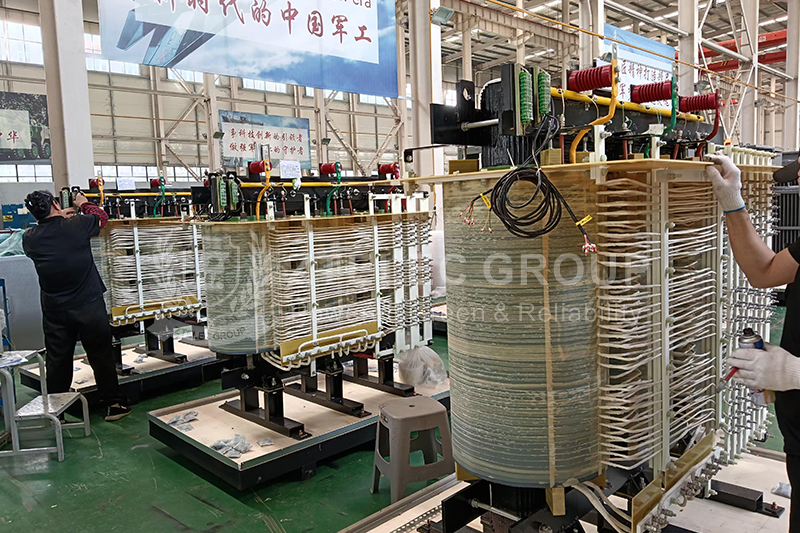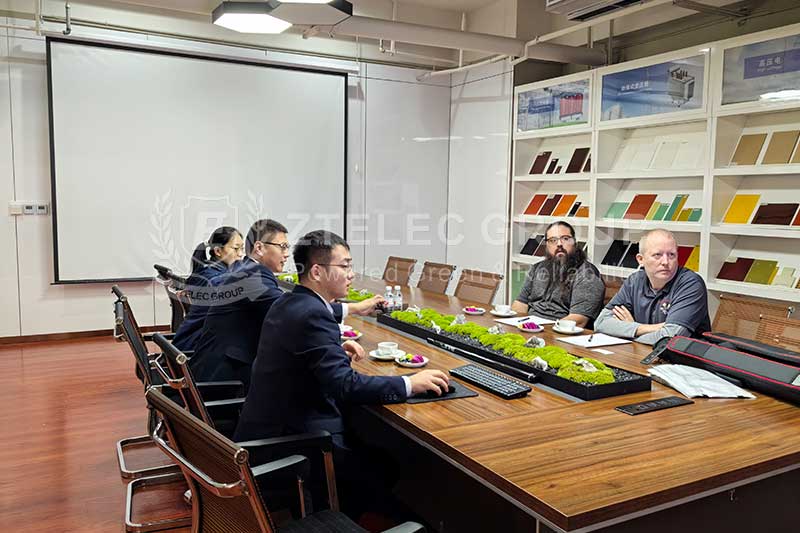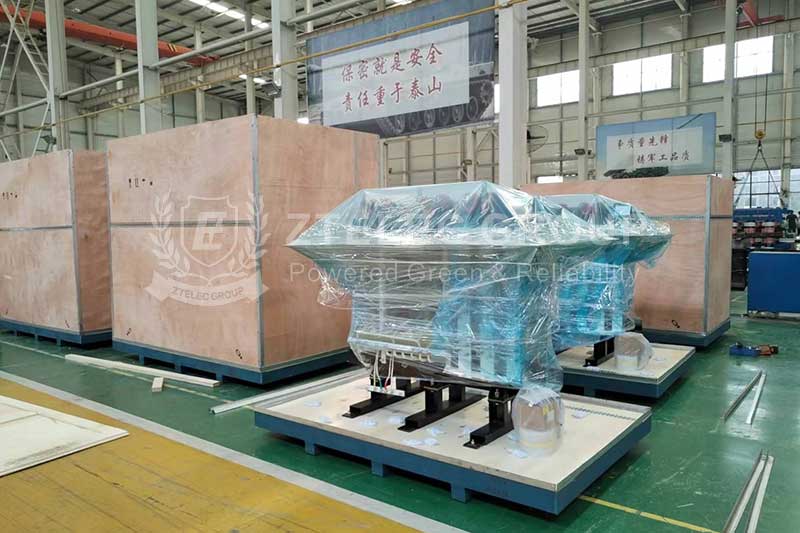Factors Affecting the Price of Oil-Immersed Transformers
Oil-immersed transformers are widely used electrical devices in power systems, primarily for stepping up and stepping down voltage levels. Their core principle is based on electromagnetic induction, transferring electrical energy from one voltage level to another. Inside the transformer, insulating oil serves as both a cooling and insulating medium, effectively dissipating heat generated during operation and maintaining the stability of the equipment.
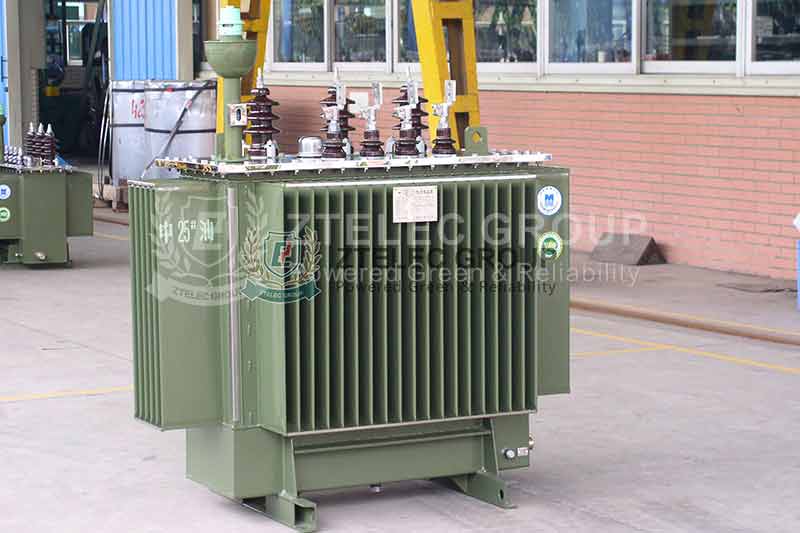
Advantages of Oil-Immersed Transformers:
1. Good Cooling Performance :
The insulating oil circulates within the transformer, effectively dissipating heat and keeping the transformer within its normal operating temperature range, thereby extending its service life.
2. High Energy Transmission Efficiency :
Oil-immersed transformers have a high energy conversion efficiency with low losses, significantly enhancing the efficiency of electrical energy transmission.
3. Excellent Insulation Performance :
Insulating oil not only provides good insulation but also prevents faults such as arcing and short circuits, improving the safety of the equipment.
4. Strong Adaptability:
They are suitable for various environments, including outdoor and harsh climatic conditions, especially in humid areas or regions with large temperature fluctuations, maintaining stable performance.
5. Simple Structure and Easy Maintenance:
The structure of oil-immersed transformers is relatively simple, making routine maintenance and repairs easier and less costly.
6. Low Noise Operation :
Compared to other types of transformers, oil-immersed transformers operate with lower noise levels, making them more suitable for urban and densely populated areas.
7. High Reliability :
Due to the use of high-quality materials and advanced manufacturing processes, oil-immersed transformers have high operational reliability and low failure rates, making them suitable for long-term stable operation.
8. Environmentally Friendly
Modern oil-immersed transformers often use environmentally friendly insulating oils, reducing their environmental impact and complying with current environmental standards.
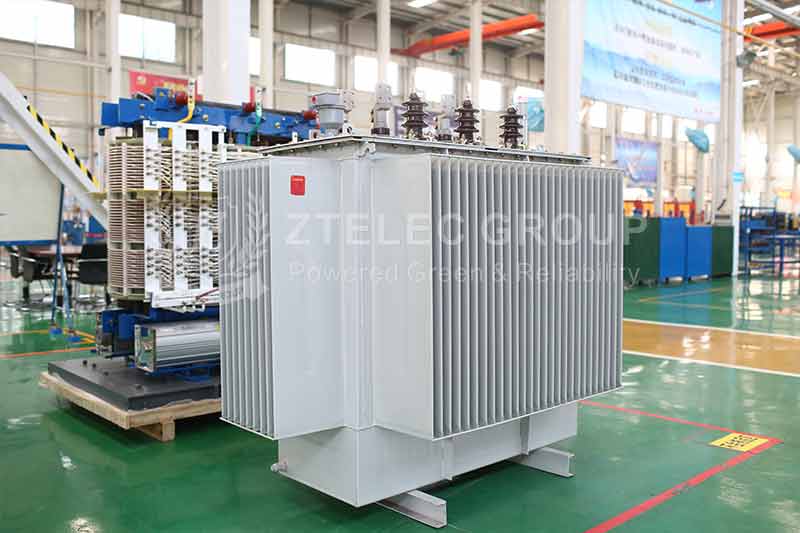
Factors Affecting the Price of Oil-Immersed Transformers:
Oil-immersed transformers are essential equipment in power systems, and their prices are influenced by various factors. Understanding these factors helps companies make informed procurement decisions and assists users in budgeting effectively. Here are the main factors affecting the price of oil-immersed transformers:
1. Material Costs:
The manufacturing of oil-immersed transformers involves various materials, including copper, aluminum, silicon steel sheets, and insulating oil. Fluctuations in raw material prices directly impact production costs. Particularly in international markets, the rise and fall of metal prices can significantly affect transformer prices.
2. Manufacturing Processes:
The complexity and precision of the manufacturing processes also influence the price. High-precision machining, welding, and assembly require greater technical demands and equipment investment, increasing production costs. Additionally, using new eco-friendly materials or technologies can also raise manufacturing costs.
3. Transformer Specifications and Capacity:
The specifications and capacity of transformers are key factors in determining price. Generally, larger and more complex transformers have higher prices. Specialized transformers, such as explosion-proof or high-temperature types, often have higher prices due to unique design and material requirements.
4. Market Supply and Demand :
The relationship between supply and demand significantly impacts prices. During periods of high demand, the price of oil-immersed transformers often rises; conversely, during market saturation or low demand, prices may decline. Competitors' pricing strategies can also influence market prices.
5. Transportation and Installation Costs:
Oil-immersed transformers are typically large, and transportation and installation costs also affect the total cost. Long-distance transportation, special transportation conditions, and challenges encountered during installation can increase the final price.
6. Technical Support and After-Sales Service:
The quality of technical support and after-sales service provided by manufacturers is another important factor affecting price. Some high-end manufacturers may include comprehensive after-sales services and technical support in their pricing, reflecting added value.
7. Policies and Standards:
Relevant policies, industry standards, and environmental regulations in various countries and regions can affect the design and manufacturing costs of transformers. For instance, transformers required to use eco-friendly materials or meet specific energy efficiency standards may incur higher R&D and manufacturing costs.
8. Brand Influence:
Well-known brands usually command higher prices due to their high-quality products and strong reputation. Users' perceptions of brand influence and market recognition also affect pricing to some extent.
In summary, the price of oil-immersed transformers is determined by a combination of factors, including material costs, manufacturing processes, specifications and capacity, market supply and demand, transportation and installation costs, technical support, policies and standards, and brand influence. Understanding these factors can help businesses budget effectively and choose products with better cost-performance ratios. Users are also advised to consider not only the price but also the quality, service, and maintenance of the products to ensure the effectiveness and long-term stability of their investments.
- more+releated article
- 2025-12-13G10 and FR4 Epoxy Boards: Commonly Used for Ge
- 2025-12-13Comparison of Heat-Resistant DDP Insulating Pa
- 2025-12-12Price of a 1600kVA 10kV Cast Resin Dry-Type Tr
- 2025-12-12How to Choose Epoxy Laminate Materials for Gen
- 2025-12-11Protection Configuration Principles for 35kV D
- 2025-12-11The Price of Heat-Resistant DDP Insulation Pap
- 2025-12-10Application Prospects of 10kV/35kV Oil-Immerse
- 2025-12-09How to Reduce the Maintenance Cost of Oil-Imme
- 2025-12-09How to Choose the Best 110 kV Oil-Immersed Pow
- 2025-12-08Heat-Resistant DDP Insulation Paper

